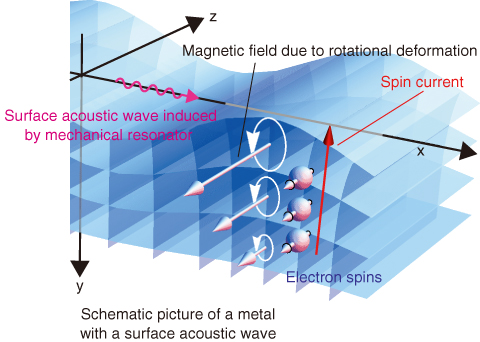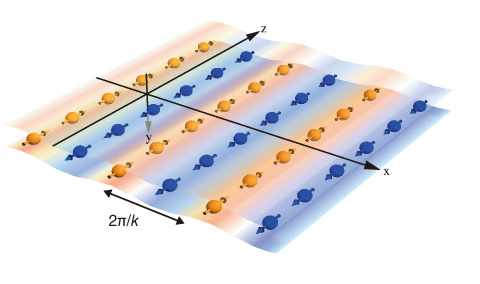
Fig.3-2 Spin-current generation by acoustic wave

Fig.3-3 Magnetic pattern induced on the surface
Electrons have two fundamental properties, electricity and magnetism. In particular, the origin of magnetism is known as “spin,” which is related to the spinning motion of electrons. Recent progress of nanotechnology enables us to control the “spin current,” a flow of spins. Researchers have been studying the relation between spin current and magnetism, and developing next-generation electronic devices using spin current.
Conventionally, the generation of spin current has required magnets or rare metals since such materials have special qualities that align electron spins. In other words, common metals, such as aluminum (Al) or copper (Cu), cannot be utilized for spin-current generation because they have weak spin-control properties.
We have found that the deformation of crystals can align spins and have proposed a new method for spin-current generation using the deformation of common materials, such as Al or Cu.
We formulated a theory of spin current in metals deformed by acoustic wave injection. When acoustic waves are injected into metals using piezoelectric devices, which convert electric signals into acoustic waves, the so-called surface acoustic waves (SAWs) are created (Fig.3-2). SAWs propagate along the x-axis and the excited local rotational deformation of the metal. The rotational deformation induces magnetic fields whose intensity increases toward the metal surface. In general, spin has the following properties:
(1) Spin aligns parallel to the magnetic field
(2) Spin moves to where a stronger magnetic field is applied
Thus, the magnetic field induced by the SAW aligns the third component of spins to the z-axis and flows the spins along the y-axis. As a result, a stripe pattern of spins appears on the metal surface, as shown in Fig.3-3.
We have also found that sufficient spin current can be created for magnetic devices if a SAW with several GHz range is injected into Al or Cu. This means that our method does not require magnets or rare metals for spin-current generation. Hence, our findings are expected to offer more options for spin-current generation than ever before and a new route to develop rare-metal-free magnetic devices.